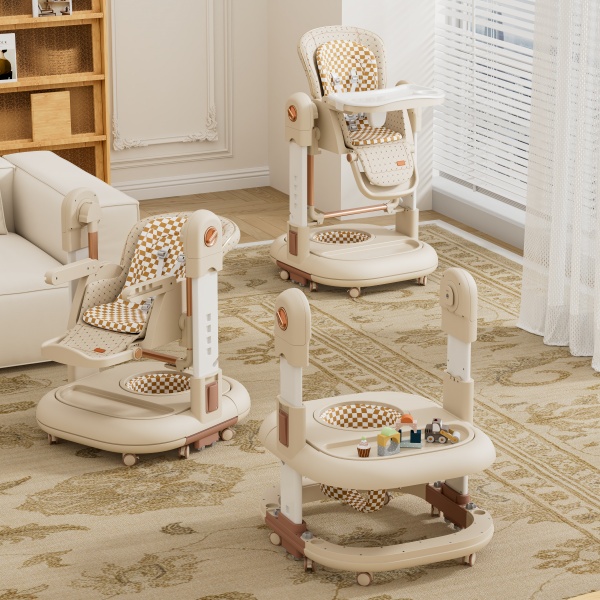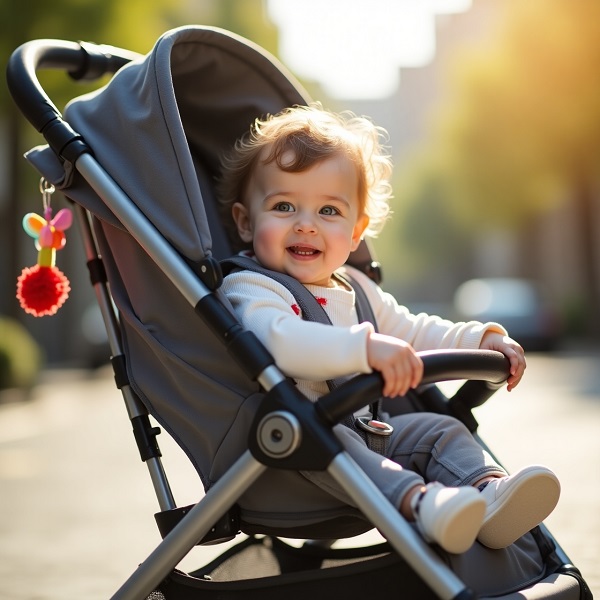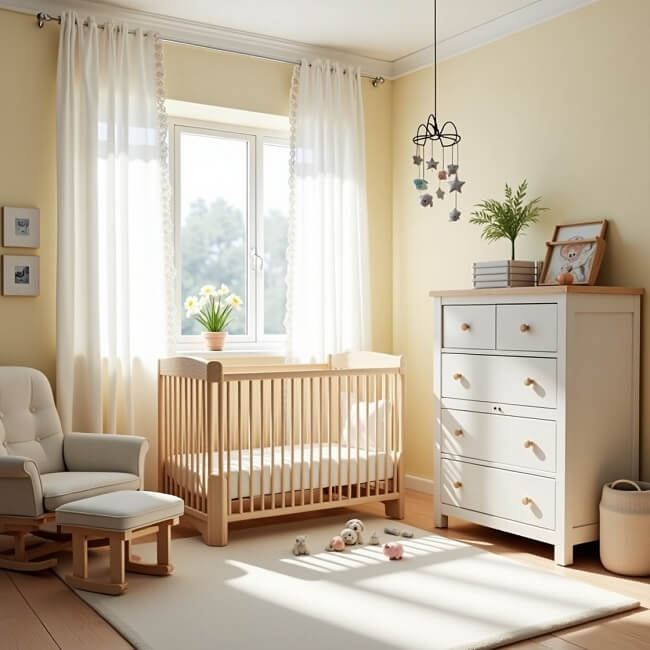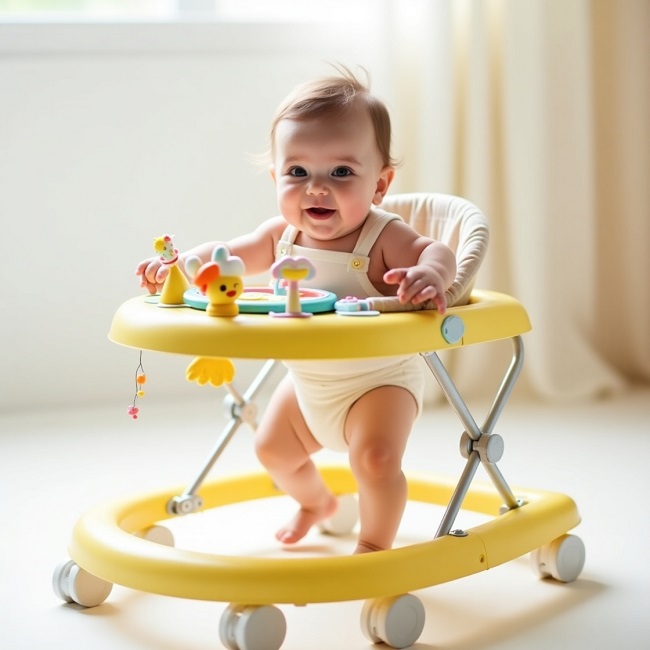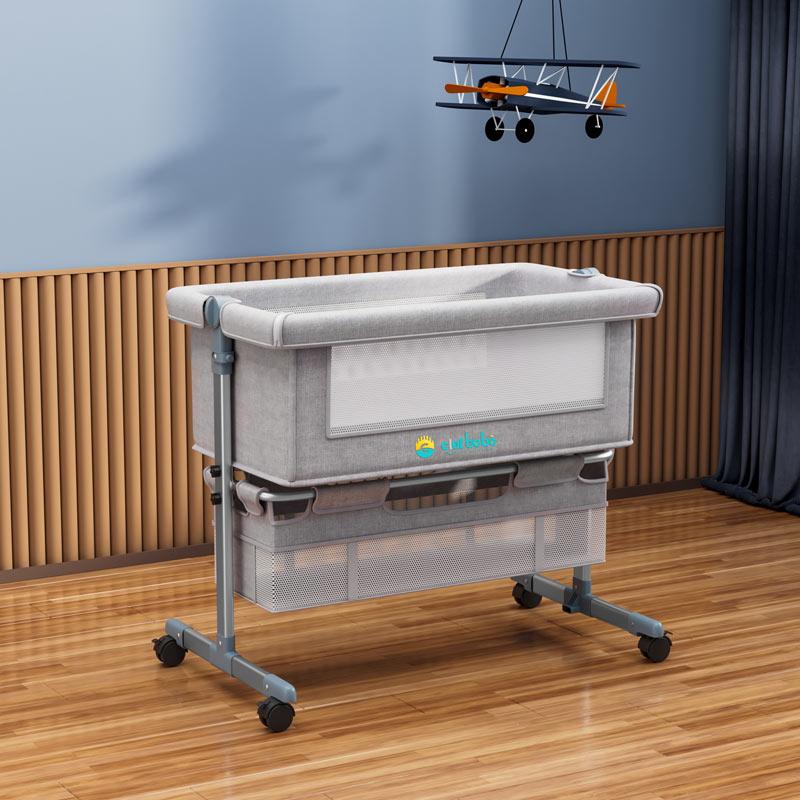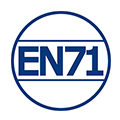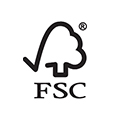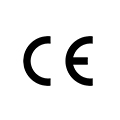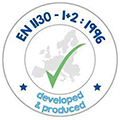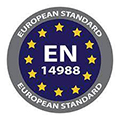According to industry data, the global kids’ furniture market was valued at $36.5 billion in 2024 and is projected to reach $74.2 billion by 2034, growing at a compound annual growth rate (CAGR) of 7.6%. Notably, the demand for customized children’s furniture is playing a significant role in this growth.
Children’s furniture is more than just scaled-down versions of adult pieces—it is specifically designed to meet the unique needs, safety requirements, and developmental stages of kids.
This guide will take you deep into all aspects of customized kids’ furniture—from manufacturers to watch in 2025, to safety certification standards, and how to create differentiated products through OEM/ODM partnerships.
Whether you’re aiming to optimize your procurement channels or planning to launch your own brand, this guide will provide you with practical and strategic insights.
What Is Custom Kids Furniture?
In the field of commercial procurement, custom kids’ furniture provides retailers, distributors, and brand owners with a unique competitive advantage in the market. This B2B customization model emphasizes mass production aligned with market needs, enabling buyers to secure exclusive product lines tailored to their target customers.
Professional kids’ furniture manufacturers typically offer multi-level customization services—from basic size and color adjustments to fully independent product development—catering to the diverse needs of buyers of different scales.
Branding Solutions
Customization services allow buyers to become deeply involved in product design:
Incorporate private brand logos.
Customize exclusive packaging and labeling.
Develop unique styles aligned with brand positioning.
Compliance Customization
Different sales markets have strict regulatory requirements for kids’ furniture:
The EU requires compliance with EN71 standards.
The U.S. mandates ASTM F963 certification.
Japan requires adherence to ST standards.
Customization Level Selection
Basic customization: Size, color, and fabric adjustments.
Advanced customization: Structural and functional modifications.
Full development: Complete ODM service from design to production.
Where to Wholesale Kids Furniture?
Regional Industrial Clusters
China: China remains the world’s leading producer, with a well-established supply chain in Guangdong and Zhejiang provinces.
Vietnam: An emerging manufacturing hub with a low labor force and significant cost advantages.
Eastern Europe: Manufacturers in Eastern Europe—particularly in Poland and Romania—can deliver products to the EU market more quickly and efficiently.
International B2B Trading Platforms
Globally recognized platforms such as Alibaba.com, Global Sources, and Made-in-China.com gather a wide array of certified suppliers. These platforms offer several advantages:
Transparent supplier information, including export qualifications and customer reviews.
Advanced filtering by product category, certification standards, minimum order quantity, and more.
Built-in trade assurance and dispute resolution services.
International Professional Exhibitions
International trade shows remain vital for building direct relationships with manufacturers. Buyers can inspect product quality firsthand, explore customization opportunities, and negotiate terms face-to-face.
- imm cologne
- High Point Market
- China International Furniture Fair
Top Kids Furniture Manufacturers in 2025
| Manufacturers | Location | Main Products | Introduction |
| 1. Clafbebe | China | Baby beds bassinets toddler beds playpens Montessori beds high chairs bunk beds baby bouncers and swings. | Focusing on OEM/ODM baby and kids furniture, they have strong production capacity and a perfect product testing system, and their products are exported to many countries and regions. |
| 2. Micuna | Spain | Rocking chairs dressers co-sleeping kits highchairs Montessori furniture | Micuna is known for its elegant wooden baby furniture, crafted with non-toxic finishes to ensure both safety and style. Its patented convertible crib system and simple European design make it unique in both function and form. |
| 3. Boori | Australia | Nursery furniture sets kids bunk beds bassinets & cradles kids beds climbing furniture bookshelves | Boori provides high-quality baby furniture crafted from premium solid wood and finished with certified, child-safe materials. Its signature convertible crib design is designed to last from infancy to childhood, demonstrating long-term value. |
| 4. Pali | Italy | Baby beds feeding chairs dressers nightstands bedding bookcases/hutches | Pali incorporates over a century of craftsmanship into high-quality baby furniture made from sustainable hardwoods. Its products stand out for their elegant details, smooth finishes, and adherence to strict safety and quality standards. |
| 5. FLEXA | Denmark | Bookcases baby changing tables cots bunk beds children’s beds | FLEXA designs modular children’s furniture that adapts to your child’s growth. With a focus on ergonomics, playful design, and adaptability, FLEXA furniture can adapt to the changing needs of children, while meeting the needs of sleep and learning. |
| 6. Gaia Baby | England | Changing stations cots dressers wardrobes rocking chairs footstools | Gaia Baby offers beautiful convertible cribs and nursery furniture. Its simple, multifunctional designs reduce waste and provide stylish, durable solutions for modern families. |
| 7. Alondra | Spain | Cribs mini cribs mattresses bookcases dressers | Alondra stands out with its modern, high-end baby furniture, and is widely praised for its bright finishes and convertible crib designs. Its innovative designs often combine functionality with luxurious appeal, perfect for design-conscious parents who seek versatility. |
| 8. Monogram by Namesake | USA | Bassinets baby beds dressers nursery seating mattresses | Monogram features an exclusive line of nursery furniture, distinguished by handcrafted details and high-end materials for a refined, timeless look. Each piece is crafted to heirloom standards, combining luxurious aesthetics with modern safety features. |
| 9. Nursery Works | USA | Bassinets baby beds dressers nursery seating mattresses | Nursery Works offers bold, artistic nursery furniture. Known for its striking cribs and modern aesthetic, its products blend functionality with high-end design to create visually striking nurseries. |
| 10. Oeuf | USA | Toddler bed baby bed dressers and storage changing pads study desks and chairs changing trays | Oeuf blends minimalist design with sustainability, creating baby and toddler furniture from eco-friendly materials and non-toxic, certified-safe finishes. Its versatile designs balance form with long-term usability. |
Popular Types of Kids Furniture (Latest Product Catalog Included)
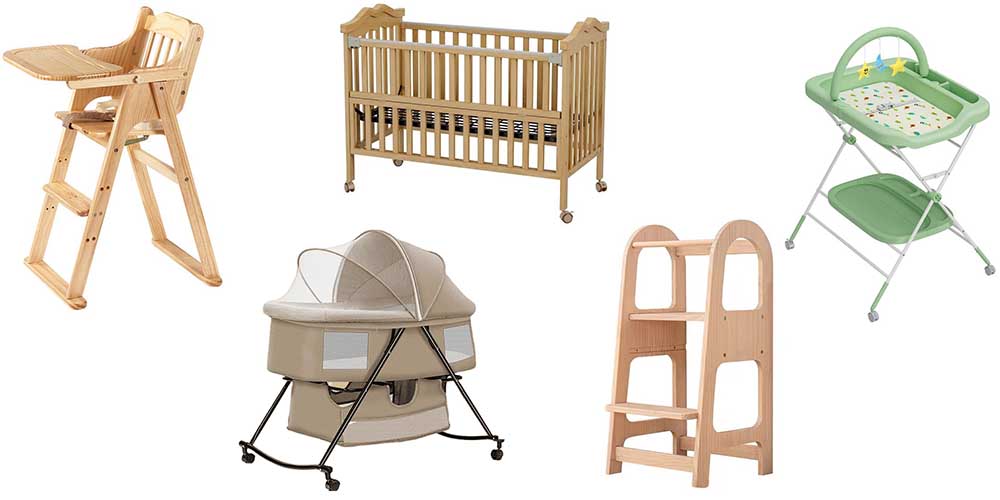
The children’s furniture market has grown rapidly in recent years, with product designs placing greater emphasis on safety, environmental sustainability, versatility, and fun.
Below are the most popular types of kids’ furniture in 2025, the latest product trends, and the newest product catalog from manufacturer Clafbebe—featuring a wide range of high-end and budget-friendly styles—to help wholesalers, retailers, and brands stay ahead of market trends.
Crib
Cribs remain essential for families with newborns, with modern designs emphasizing safety and versatility.
JPMA-certified convertible cribs are becoming the norm, offering the ability to transform into toddler beds or daybeds as children grow, significantly extending their usable life.
The European market especially favors solid wood cribs that comply with EN716 standards, while North American consumers prefer multifunctional designs that meet ASTM F1169 standards.
Bassinet
As a complement to cribs, bassinets are popular among families with limited space.
Portable designs are the current trend, with many models featuring removable rocker bases that can be used in the bedroom or easily moved to the living room.
Notably, smart cradles that comply with CPSC safety standards are starting to enter the high-end market, offering built-in soothing vibrations and white noise functions that appeal to young parents.
Toddler Bed
As a transitional product, toddler beds prioritize safety. A low bed frame with an anti-fall guardrail is standard, while expandable length designs accommodate children of different ages.
Currently, many pine wood toddler beds coated with environmentally friendly water-based paint are available on the market, meeting the EN71-3 safety standard.
High Chair
The evolution of high chairs reflects a balance between practicality and safety. The three-point safety harness meeting EN14988 standards has become standard, while adjustable height and removable trays enhance ease of use.
The latest trend is the use of easy-to-clean, food-grade plastic materials combined with machine-washable cushions. Some high-end brands have also started incorporating antimicrobial coatings that comply with FDA standards.
Bunk Beds
Bunk beds maintain steady demand, especially in school dormitories and homes with multiple children. The latest designs emphasize safety features, including higher guardrails and sturdy ladder structures.
Metal frame bunk beds that meet ASTM F1427 standards remain popular in European and American markets, while solid wood models complying with EN747 standards are favored in Asian markets.
Modular designs have become a new trend, with some products able to split into two separate single beds.
Discover the latest products: Bunk Beds Collection
Montessori Floor Beds
As an emerging category, Montessori floor beds have seen significant growth. These low-profile bed frames are designed following Montessori education principles, making it easy for young children to get in and out of bed independently.
The latest models are mostly crafted from FSC-certified birch or beech wood, featuring rounded edges and mattresses placed directly on the floor frame. Styles that meet CPSC safety standards typically include removable protective railings.
Discover the latest products: Montessori Floor Beds Collection
Learning Tower
Learning towers remain popular in European and American markets as kitchen helpers. Adjustable height designs accommodate children of different ages, while non-slip pedals and guardrails meeting ASTM F404 safety standards are essential features.
The current trend favors lightweight, easy-to-move designs, with some models also incorporating foldable functions for space-saving convenience.
Discover the latest products: Learning Tower Collection
Bookshelves
Bookshelves play an important role in the layout of kids’ rooms. A forward-leaning design with a 5 to 10-degree tilt better displays picture books. Rounded corners and a stable, anti-tip design that complies with EN71 standards are basic requirements.
Modular combination bookshelves are becoming a trend, allowing the height and width of shelves to be freely adjusted to fit different spaces.
Cubby Storage Units
The versatility of storage cabinets, or cubby storage units, makes them a best-selling category. The open-grid design, compliant with EN71-3 standards, allows children to easily access and store their toys independently. Modular systems that can be stacked and combined are currently popular.
Some high-end models feature soft-closing doors with anti-pinch designs, and anti-slip pads are added at the bottom to ensure stability.
Key Safety Certifications to Look For

The Core Safety Certification System
The most authoritative EN71 standard in the EU market includes three key parts: EN71-1 (mechanical and physical properties), EN71-2 (flammability), and EN71-3 (migration of specific elements).
Products that meet these standards must pass designated laboratory tests and carry the CE certification mark. It is especially important to note that the EN71-3 revision in 2019 introduced stricter limits on heavy metal migration. Always verify the validity of test reports when purchasing.
The North American market uses a dual system of ASTM international standards and CPSC regulations. ASTM F963 is the U.S. toy safety standard, but many of its provisions also apply to kids’ furniture. Meanwhile, CPSC (U.S. Consumer Product Safety Commission) regulations such as 16 CFR 1213 (cribs) and 16 CFR 1234 (kids’ folding chairs) are mandatory.
The latest 2024 revision of ASTM F2057 (Safety Standard for Clothing Storage Units) requires all kids’ storage furniture over 30 inches tall to be equipped with anti-tip devices.
Environmental Certification of Materials
GREENGUARD Gold certification is the gold standard for measuring chemical emissions from products, with a special focus on harmful substances such as formaldehyde and VOCs. For wooden furniture, FSC (Forest Stewardship Council) certification ensures the wood comes from sustainably managed forests, a standard requirement in high-end European and U.S. markets.
Although the ST standard (Japanese Toy Safety Standard) is unique to the Japanese market and mainly targets toys, its safety clauses are often applied to children’s furniture.
Structural Safety Requirements
Anti-tip design has become an international standard. Standards like ASTM F2057 in the U.S. and EN14749 in the EU clearly require kids’ storage furniture over 24 inches tall to have wall fixings.
Small parts safety is another critical aspect. According to EN71-1 and ASTM F963, all furniture intended for children under 3 years old must have no parts that can pass through the small parts test cylinder (a beveled cylinder 1.25 inches in diameter and between 1 and 2.25 inches deep).
Special Product Standards
Safety requirements for cribs are the strictest. U.S. regulation 16 CFR 1213 completely bans the sale of traditional drop-side cribs, while EU standard EN 716-1:2017 sets tight specifications on mattress support gaps and slat spacing.
Special attention is needed for stability testing of high chairs. The EN14988 standard requires that products must not tip over when placed on a 10-degree inclined platform, and all adjustment mechanisms must be designed so children cannot operate them.
Top Features to Add When Customizing Kids Furniture
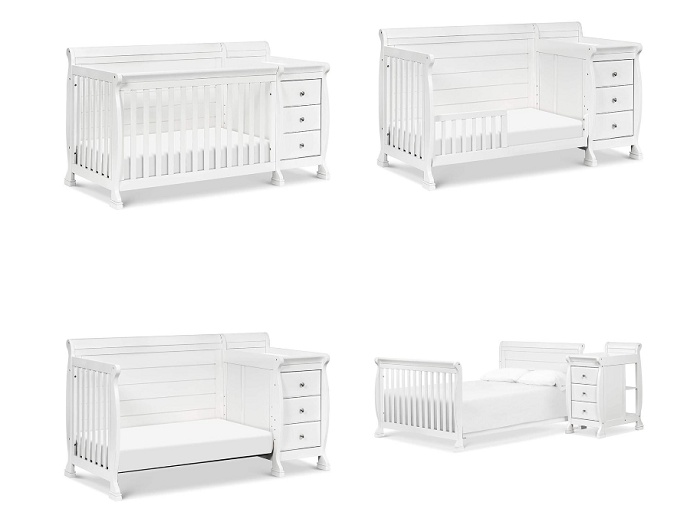
Adjustable Growth System
Height adjustment systems have become a standard feature in modern toddler furniture. Many high-quality products now feature hidden adjustment holes, allowing height changes with a simple touch—no tools required.
Specifically, learning tables and chairs often provide an adjustment range of 6 to 9 inches to accommodate children aged 3 to 12 years.
Market feedback shows that products with high-quality height adjustment mechanisms typically command a price premium of over 20%.
Safety Protection Design
Safety protection is a core element in kids’ furniture. Comprehensive rounded corner treatment requires all exposed edges to have a radius of at least 0.1 inches
Storage furniture taller than 24 inches must be equipped with reliable anti-tip devices.
For cribs, special attention must be given to the spacing of guardrails to ensure ventilation and prevent a baby’s head from getting stuck. Thoughtful designs may include soft, glow-in-the-dark strips along furniture edges to prevent bumps or glare when getting up at night—for example, Clafbebe’s baby bed with integrated LED lighting.
Modular Combination Architecture
For buyers, standardized interface designs allow basic modules to be flexibly combined into various product forms, significantly reducing warehousing and logistics costs.
For consumers, modular design means new components can be added as children grow, extending the furniture’s service life. This is especially popular in small urban households where modular furniture maximizes space use.
Environmental and Healthy Configuration
Environmental and health features are increasingly important in modern children’s furniture. Water-based paints ensure zero formaldehyde emissions and GREENGUARD-certified products tend to be preferred by parents.
Using FSC-certified sustainable wood not only benefits the environment but also improves product texture. Antibacterial surface treatments on high-contact areas further promote hygienic use.
Market research indicates a growing share of consumers willing to pay 15–20% more for eco-friendly products, making this an important point of differentiation.
Private Label vs OEM vs ODM: What’s Best for Custom Kids Furniture?
Private Label Model
The private label model suits established companies seeking full control over their children’s furniture products.
These companies typically have professional design teams familiar with children’s behaviors and parents’ buying psychology.
They can independently create products that comply with strict safety standards like EN71 and ASTM, while incorporating unique brand elements into the design.
However, this model requires covering all costs—from mold development to safety certification—and is best suited for experienced children’s product distributors with strong financial resources and stable sales channels.
OEM Model
The OEM model is mainly used for mass-producing standardized children’s furniture products. Many large supermarket chains and major e-commerce platforms adopt this approach, providing detailed product specifications and requiring manufacturers to produce consistent items that meet safety standards.
Buyers must verify that the factory operates dedicated children’s product production lines and has testing equipment capable of performing stricter safety checks than those used for ordinary furniture.
ODM Model
The ODM model has become the most dynamic form of cooperation in the children’s furniture industry. Professional ODM manufacturers not only have mature production systems but also extensive experience in children’s product design.
They offer market-tested product solutions that comply with safety standards across various countries. Buyers simply select designs suited to their target markets.
- Start-up children’s brands looking to quickly establish product lines;
- Cross-border e-commerce businesses needing to adapt designs for different national markets;
- Educational institutions customizing children’s furniture to meet special requirements.
Conclusion
For wholesalers and retailers, a thorough understanding of the safety certification requirements across different regional markets is a fundamental prerequisite for success. In terms of product design, adjustability, safety, and environmental sustainability have become essential and irreversible market trends.
Top-quality manufacturers must not only possess comprehensive production qualifications but also demonstrate continuous product innovation and rigorous quality control systems.
For buyers looking to enter or expand in the kids’ furniture market, it is advisable to partner strategically with manufacturers who have strong R&D capabilities to collaboratively develop differentiated products.
Customize Baby Furniture for Your Market with Clafbebe!
Clafbebe is a renowned Chinese manufacturer specializing in customized baby and kids’ furniture. Our facility covers approximately 129,000 square feet, with five production bases and over 200 employees.
We have our own team of children’s product experts and professional designers. Through our OEM/ODM services, we collaborate closely with you to develop baby products tailored to your market’s preferences.
Simply share your ideas and requirements with our designers, and they will transform your vision into reality—helping you achieve strong sales in your store.
Contact Clafbebe today to get your personalized furniture solution!
Recommended Related Articles:
- How to Start a Baby and Kids Furniture Retail Business?
- Top 10 Kids Furniture Manufacturers
- Exploring 11 Different Types of Baby Furniture
- Top 15 Baby Product Manufacturers in China
- 12 Top Baby Furniture Manufacturers in 2025
- How to Import Baby Furniture from China?
- Wholesale Baby Bassinet: 2025 Distributors & Retailers Guide

